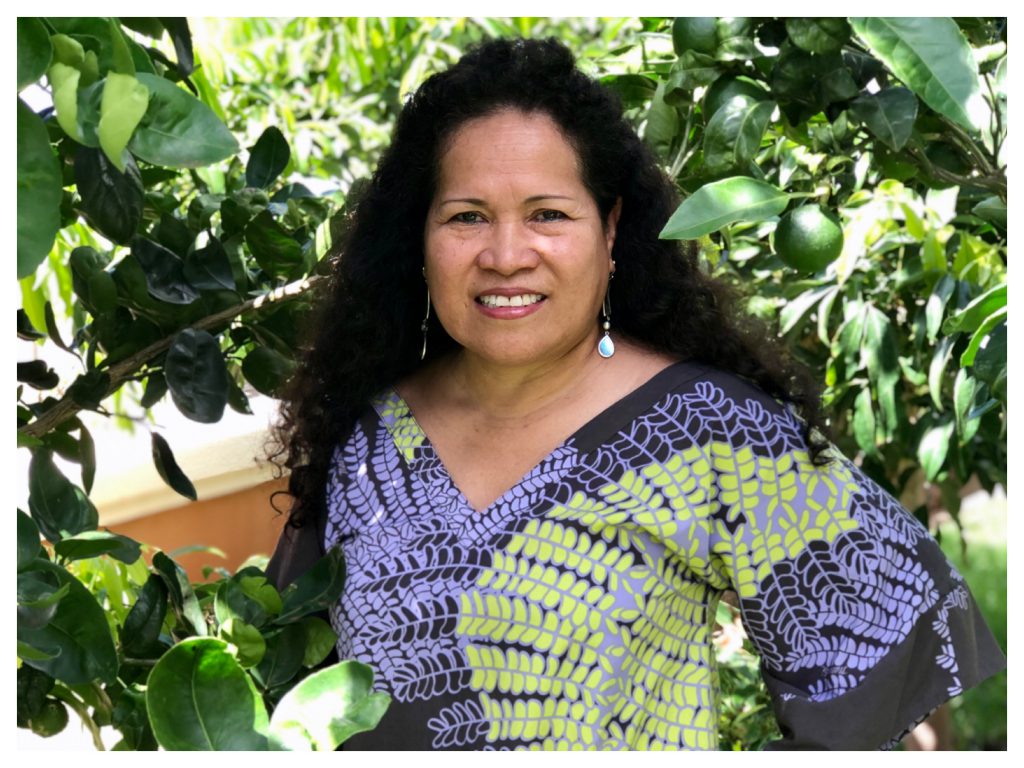By A. Houma
Lilomaiava-Doktor’s contribution to Pacific Studies is vast, innovative and profound. The crux of Lilomaiava-Doktor’s scholarship is centred around themes such as forced and voluntary Pacific migration, Pacific development, transnationalism and diaspora (531pi, 2021). Some of Lilomaiava-Doktor’s notable works include Oral Traditions, Cultural Significance of Storytelling and Samoan Understandings of Place or Fanua (Lilomaiava-Doktor, 2020) and Changing Morphology of Graves and Burials in Samoa (Lilomaiava-Doktor, 2016). Lilomaiava-Doktor’s Samoan heritage and background in geography is deeply evident within her work, as she analyses the interactive relationships that the themes listed previously have with culture and place. In her article Beyond Migration: Samoan population movement (Malaga) and geography of social space (Vā), Lilomaiava-Doktor (2009) focuses on migration and development by referencing and examining the Indigenous cultural concepts of Malaga and Vā, which are integral to Faʻa-Samoa. For instance, Malaga is the Samoan verb for migration or movement. More accurately, since it is the polite word for come (alu) and go (sau), Malaga implies that travel or movement is constant, where individuals constantly return to their homeland even after migrating to a new country. Lilomaiava-Doktor (2009) adds that Malaga also refers to the spiritual journey of being here on earth. The concept of Malaga demonstrates the fluidity and holism of Samoan views on migration. It also depicts how Western views on migration are vastly different, since Westerners typically view migration to be a complete severance of ties from one’s homeland (Lilomaiava-Doktor, 2009). As evident with the conceptualisation of Malaga, Lilomaiava-Doktor not only adds nuance to discourse on migration and development but utilises her platform to empower Indigenous knowledge, which has been traditionally excluded from the conversation by Western academics. This points to how Pacific and Indigenous knowledge can add valuable depth and insights to investigating particular phenomena that would otherwise be omitted if relying purely on Western understandings, theories and methodologies.

To build on the idea presented above, the works of Lilomaiava-Doktor bring Pacific voices to the forefront of debates which traditionally have been dominated by Eurocentric schools of thought. In her article Beyond Migration: Samoan population movement (Malaga) and geography of social space (Vā), Lilomaiava-Doktor (2009) challenges traditional analyses of migration and development. She argues that conventional explanations ‘are almost always based on a Euro-American model… which is too simplistic’ and do not fully encapsulate the way in which Pacific peoples view migration (Lilomaiava-Doktor, 2009). In contrast, a better approach she continues, “must include people’s indigenous knowledge and understanding of their movements, as well as the structural, economic and political environments in which they are enmeshed” (Lilomaiava-Doktor, 2009). This statement is profound as it illustrates the decolonial nature of Lilomaiava-Doktor’s literature. In advocating for Indigenous ways of understanding migration through Malaga and Vā, Lilomaiava-Doktor alters colonial narratives and discourse, so that Pacific people can see themselves and their worldview better represented within academia. Lilomaiava-Doktor is a trailblazer of Pacific Studies in this regard, whose legacy has paved the way for like minded Pacific scholars to follow. The decolonial nature of Lilomaiava-Doktor’s work has built the foundations for others to question the status quo and to continue to rewrite colonial academic discourses.
“Migration and development studies desperately need indigenous perspectives and concepts to enhance understanding of theoretical and practical issues so critical to the region”
– Lilomaiava-doctor (2009)
Lilomaiava-Doktor’s contributions to academia are significant since they exceed the disciplinary boundaries of Pacific Studies and impact several academic fields. For example, the works that cite Fa’a-Samoa and population movement from the inside out: The case of Salelologa, Savai’i, apply Lilomaiava-Doktor’s (2004) conceptualisation of Vā to the respective disciplines of education (Reynolds, 2017), health (Poltrak, 2007), dance (Ferris-Leary, 2013) and politics (Ulu, 2013). To be specific, Poltrak (2017), points out how the Vā, or the quality of relationships in the space between people or things, can contribute to health outcomes. The widespread application and utilisation of Lilomaiava-Doktor’s literature demonstrates the interdisciplinary nature of her work, and the Pacific Studies discipline.

Bibliography
Ferris-Leary, H.E. (2013.) An Analytical Perspective on Moana Research And the Case of Tongan Faiva. [Unpublished PhD thesis]. The University of Auckland. https://researchspace.auckland.ac.nz/bitstream/handle/2292/21498/whole.pdf?sequence=2
Lilomaiava-Doktor, S. (2009). Beyond “Migration”: Samoan Population Movement (Malaga) and the Geography of Social Space (Vā). The Contemporary Pacific, 21(1), 1-32. https://www.jstor.org/stable/23724742
Lilomaiava-Doktor, S. (2016). Changing Morphology of Graves and Burials in Samoa. The Journal of the Polynesian Society, 125(2), 171–186. http://www.jstor.org/stable/44012060.
Lilomaiava-Doktor, S. (2004). Fa’a Samoa and population movement from the inside out: The case of Salelologa, Savai’i. (Publication No. 3139772). [Doctoral dissertation, University of Hawai’i at Manoa]. Proquest Dissertations Publishing. https://scholarspace.manoa.hawaii.edu/server/api/core/bitstreams/98ef0f94-f30c-45d6-8ec1-327b43c49520/content
Lilomaiava-Doktor, S. (2020). Oral Traditions, Cultural Significance of Storytelling, and Samoan Understandings of Place or Fanua. Native American and Indigenous Studies, 7(1), 121-151. https://doi.org/10.5749/natiindistudj.7.1.0121
Poltrak, M. (2007). Nemesis, Speaking and Tauhi Vaha’a: Interdisciplinarity and the Truth of “Mental Illness” in Vava’u Tonga. The Contemporary Pacific, 19(1), 1-36. https://www-jstor-org.ezproxy.auckland.ac.nz/stable/pdf/23721968.pdf
Reynolds, M. (2017). Together as brothers: a catalytic examination of Pasifika success as Pasifika to Teu Le Va in boys’ secondary education in Aotearoa New Zealand [Unpublished PhD thesis]. Victoria University of Wellington. https://researcharchive.vuw.ac.nz/xmlui/bitstream/handle/10063/6487/thesis_access.pdf?sequence=1
Ulu, A.J. (2013). Pule: Development policy sovereignty in Samoa. [Unpublished Master’s thesis]. Victoria University of Wellington. https://openaccess.wgtn.ac.nz/articles/thesis/Pule_Development_Policy_Sovereignty_in_Samoa/17004736/1/files/31456987.pdf
531pi (Host). (2021, May 31). Luamanuvae Luafataali’i Sa’ilemanu Lilomaiava-Doktor [Audio podcast episode]. In 531pi. Pacific Media Network. https://omny.fm/shows/pacificmedianetwork/luamanuvae-luafataalii-sailemanu-lilomaiava-doktor#description
Images
Flickr. (2019). Tropical Lalomanu beach on Samoa Island with coconut palm trees. [Image]. https://www.flickr.com/photos/teia/48596642427
Pinterest. (2015) Samoan Clothing. [Image]. https://www.pinterest.nz/pin/390898442669700346/
